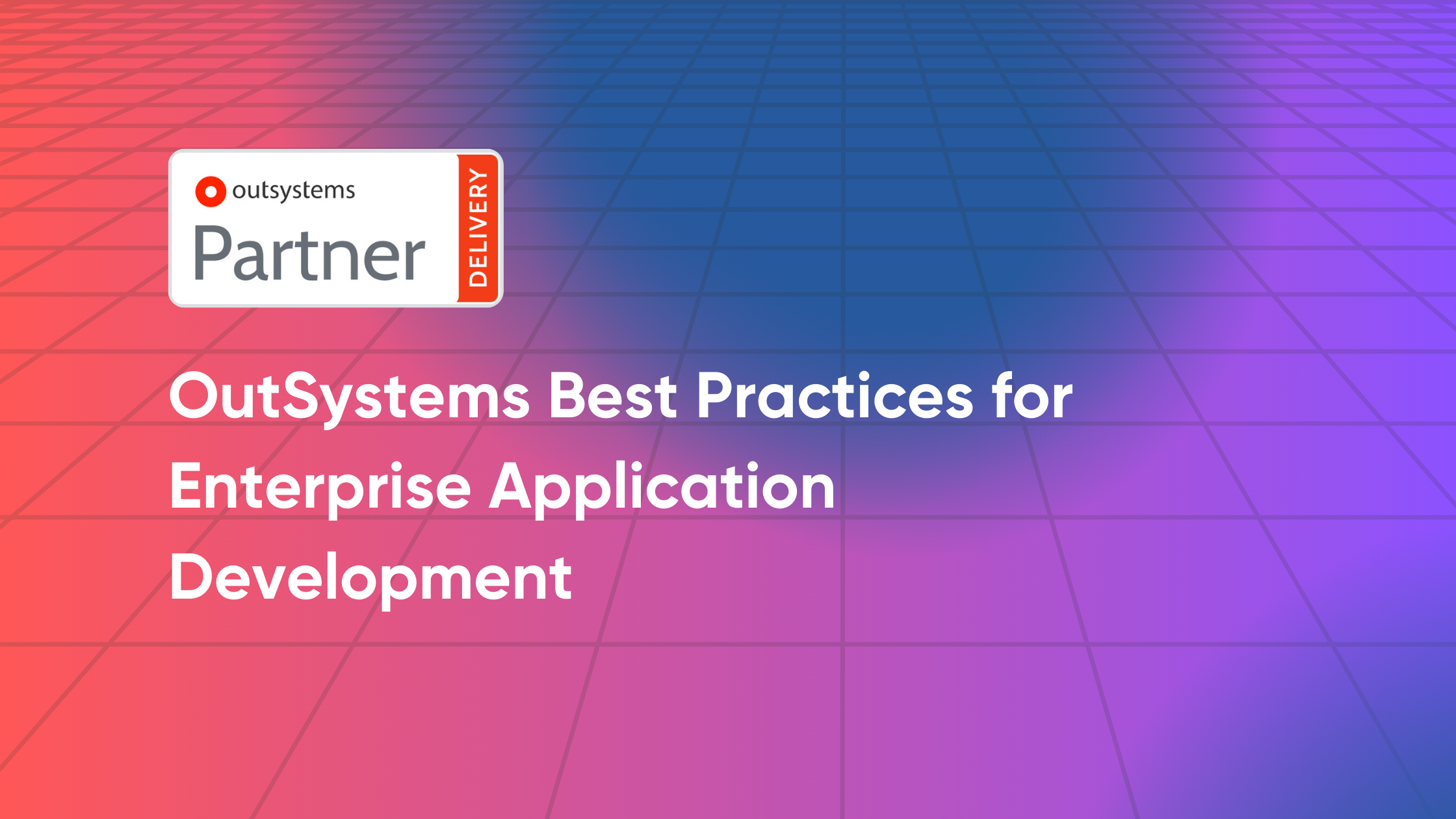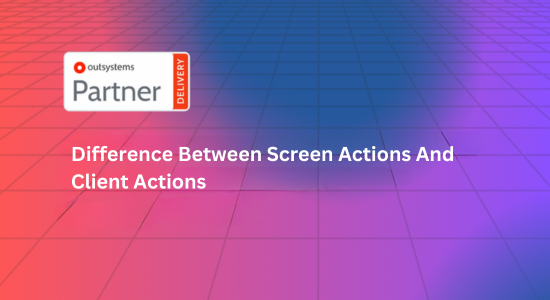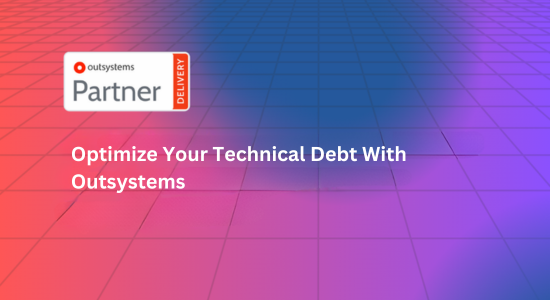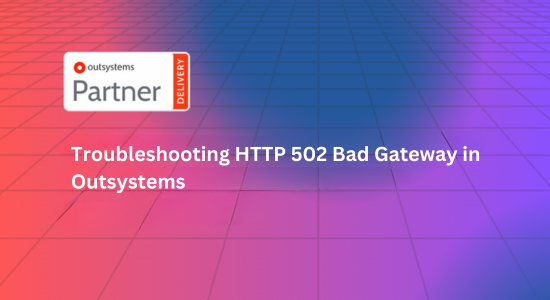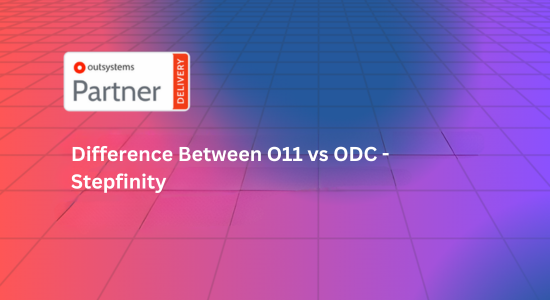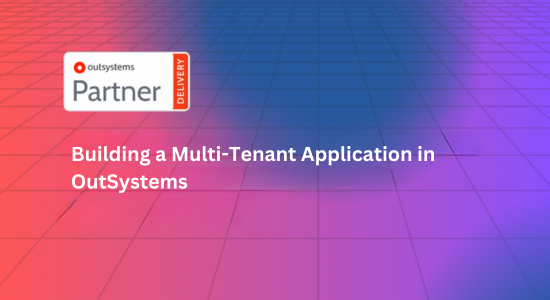OutSystems has emerged as a leader in the low-code application development space, offering a robust platform that accelerates development processes and enhances agility. For enterprises, leveraging OutSystems effectively can lead to significant gains in efficiency, quality, and scalability. However, to maximize the benefits of OutSystems, it’s crucial to follow best practices tailored to enterprise application development. This guide outlines essential best practices to help your organization achieve success with OutSystems.
1. Define Clear Objectives and Requirements
Understand Business Goals
Before starting development, it’s essential to clearly define the business objectives you aim to achieve with the application. Engage stakeholders to understand their needs and expectations, ensuring alignment between the application’s functionality and the organization’s strategic goals.
Document Requirements Thoroughly
Create detailed requirement specifications that outline functional and non-functional requirements. This documentation should include user stories, acceptance criteria, and any integration needs. Thorough documentation helps avoid scope creep and ensures that all stakeholders have a shared understanding of the project.
2. Design for Scalability and Performance
Architect for Growth
Design your application architecture with scalability in mind. OutSystems supports various deployment options, including cloud, on-premises, and hybrid environments. Choose the deployment model that aligns with your scalability needs and ensure that your application can handle increasing loads and user demands.
Optimize for Performance
Performance is crucial for user satisfaction and operational efficiency. Follow these practices to optimize performance:
- Efficient Data Handling: Use caching, indexing, and optimized queries to handle large datasets efficiently.
- Asynchronous Processes: Implement asynchronous operations for tasks that do not require immediate results, reducing the load on the main application flow.
- Performance Testing: Regularly test your application’s performance under different scenarios and load conditions to identify and address potential bottlenecks.
3. Prioritize Security
Implement Robust Security Measures
Security is a top priority in enterprise applications. Utilize OutSystems’ built-in security features and follow these practices to ensure application security:
- User Authentication and Authorization: Implement strong user authentication mechanisms and enforce role-based access control to protect sensitive data.
- Data Encryption: Use encryption for data in transit and at rest to safeguard against unauthorized access and data breaches.
- Regular Security Audits: Conduct periodic security assessments and vulnerability scans to identify and address potential security risks.
Follow Compliance Standards
Ensure that your application complies with relevant industry standards and regulations, such as GDPR, HIPAA, or PCI-DSS. Implement necessary controls and documentation to meet compliance requirements and avoid legal and regulatory issues.
4. Leverage OutSystems Best Practices for Development
Use Reusable Components
Take advantage of OutSystems’ library of reusable components and templates. Reusing components can significantly speed up development and ensure consistency across your application. Create and maintain a repository of custom components for future projects to further enhance efficiency.
Adopt Agile Methodologies
Apply Agile methodologies to manage your development process. OutSystems supports Agile practices by allowing rapid prototyping, iterative development, and frequent feedback cycles. Use these features to adapt to changing requirements and deliver value incrementally.
Follow Coding Standards
Maintain high-quality code by adhering to best coding practices and standards. OutSystems’ visual development tools reduce the need for manual coding, but it’s still important to follow practices like:
- Consistent Naming Conventions: Use clear and consistent naming conventions for variables, functions, and components.
- Code Reviews: Regularly review code and design to ensure adherence to standards and identify areas for improvement.
5. Ensure Effective Integration
Plan for Integration Needs
Enterprise applications often require integration with existing systems and data sources. Plan and design your integration strategy early in the development process. OutSystems offers built-in connectors and API integration capabilities to facilitate seamless integration with various systems.
Monitor Integration Performance
Continuously monitor the performance of integrations to ensure they are functioning as expected. Implement logging and error-handling mechanisms to detect and address integration issues promptly.
6. Focus on User Experience (UX)
Design Intuitive Interfaces
User experience plays a critical role in the success of enterprise applications. Design intuitive and user-friendly interfaces by following UX best practices:
- Responsive Design: Ensure that your application is responsive and works well across different devices and screen sizes.
- User Testing: Conduct usability testing with real users to gather feedback and make necessary adjustments to improve the user experience.
Provide Comprehensive Training and Support
Offer training and support to users to help them effectively use the application. Provide documentation, tutorials, and access to support resources to assist users in navigating the application and resolving any issues they may encounter.
7. Manage Application Lifecycle Efficiently
Implement Version Control
Use version control practices to manage changes and updates to your application. OutSystems integrates with version control systems, allowing you to track changes, manage releases, and roll back if necessary.
Plan for Continuous Improvement
Adopt a continuous improvement approach by regularly reviewing and enhancing your application based on user feedback and performance metrics. Implement updates and new features incrementally to keep the application aligned with evolving business needs.
8. Monitor and Analyze Performance
Set Up Monitoring Tools
Implement monitoring tools to track application performance, user behavior, and system health. OutSystems provides built-in monitoring capabilities, but consider integrating additional monitoring solutions to gain comprehensive insights.
Analyze Data for Insights
Regularly analyze performance data and user feedback to identify trends, areas for improvement, and opportunities for optimization. Use these insights to make data-driven decisions and enhance the overall quality of your application.
Conclusion
By following these best practices for enterprise application development with OutSystems, organizations can achieve greater efficiency, quality, and scalability in their application projects. Defining clear objectives, focusing on performance and security, leveraging OutSystems’ features, and continuously monitoring and improving the application are key to a successful digital transformation journey. Embrace these practices to unlock the full potential of OutSystems and drive your enterprise toward success in the digital age.

